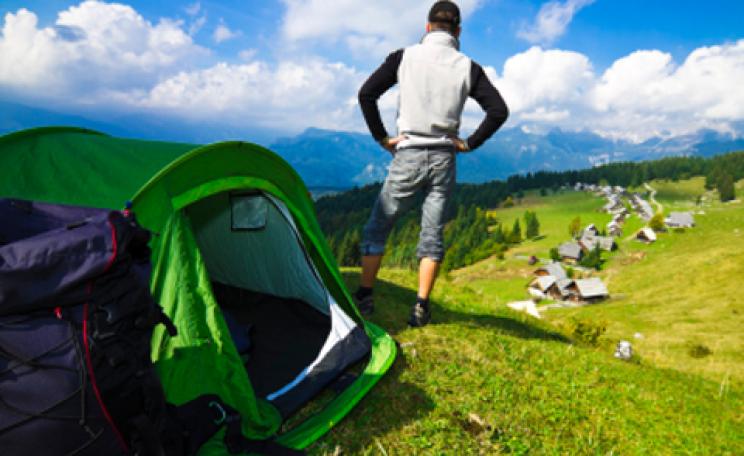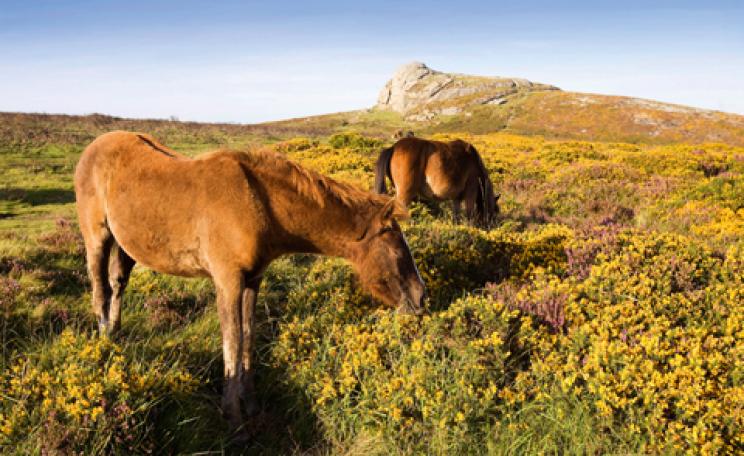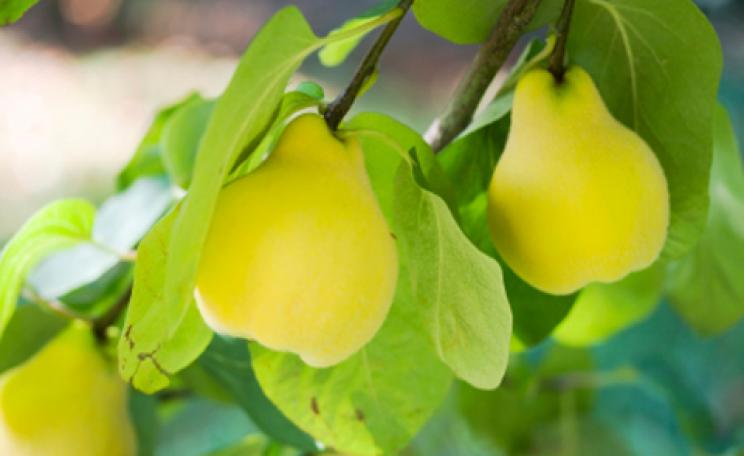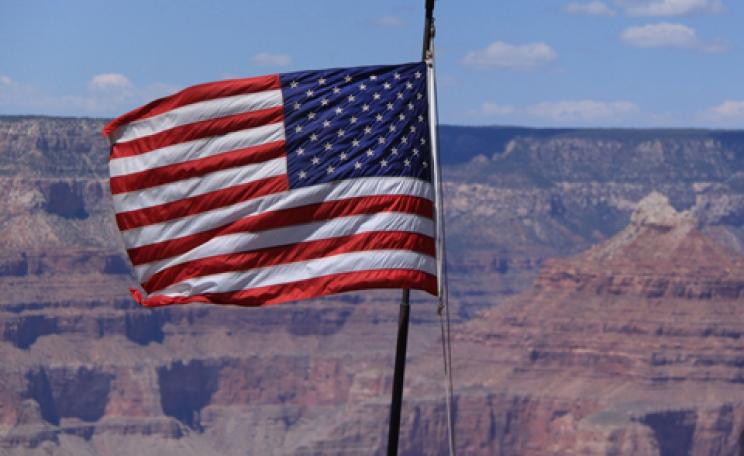With its picturesque peaks, crumbling old castles and wonderful views, Switizerland – despite the climbing franc – has become a hikers’ wonderland outside of the ski season. To the west, the shores of Lake Geneva are home to sunny hillsides laden with vines, while to the north, the capital city, Zurich, has plenty to offer those on a weekend break. But one region rarely considered by summer tourists is the mountainous area around Davos and Klosters. Perhaps it’s because the two – Klosters especially – are so synonymous with winter sports. Or maybe its because Davos hosts the World Economic Forum, which brings a global coterie of bankers, politicians and financial hacks to the town for a couple of weeks during January. But writing the area off as a banker’s playground would be to do it a real disservice because there’s far more to it than the sound of chequebooks falling open. While the lure of winter sports might bring the jet set flocking, in the off-season (summer and autumn), the town has a quiet charm at odds with the annual financial frenzy.
 At 1,560 metres (5,120 feet) above sea level, Davos is the highest city in Europe, although with a permanent population of little more than eleven thousand people, it isn’t much more than a town. What’s more, surrounded on four sides by snow capped mountains, lush rolling valleys and glorious alpine scenery; it doesn’t really feel urban at all. It takes barely 20 minutes on the bus to get from one side of town to the other, even allowing for stops, and the mountains are never out of sight. Along with the enormous white stone and wood conference centre, a smattering of city centre hotels and league-topping ice hockey team HC Davos’ Valiant Arena, most of the city’s architecture is notable for its small size and low-key appearance. Even the giant glass and steel Kirchner Museum, which contains a sensational collection of works by German expressionist artist Ernst Ludwig Kirchner (who spent much of his life in Davos), doesn’t ruffle the city’s rural mien. But then, who visits Davos for the architecture? Interesting though much of it is, the real deal in Davos is to be found higher up.
At 1,560 metres (5,120 feet) above sea level, Davos is the highest city in Europe, although with a permanent population of little more than eleven thousand people, it isn’t much more than a town. What’s more, surrounded on four sides by snow capped mountains, lush rolling valleys and glorious alpine scenery; it doesn’t really feel urban at all. It takes barely 20 minutes on the bus to get from one side of town to the other, even allowing for stops, and the mountains are never out of sight. Along with the enormous white stone and wood conference centre, a smattering of city centre hotels and league-topping ice hockey team HC Davos’ Valiant Arena, most of the city’s architecture is notable for its small size and low-key appearance. Even the giant glass and steel Kirchner Museum, which contains a sensational collection of works by German expressionist artist Ernst Ludwig Kirchner (who spent much of his life in Davos), doesn’t ruffle the city’s rural mien. But then, who visits Davos for the architecture? Interesting though much of it is, the real deal in Davos is to be found higher up.
Cheerfully wobbling its way up the mountainside, the bright red Jakobshornbahn cable car is the easiest route from Davos Dorf (the station) up to Weissfluhjoch and the surrounding mountains. During the winter, the peaks and gullies are covered in a thick, fluffy blanket of snow, but in the summer and autumn, the blanket is made of wild flowers – many of them rare, all of them beautiful. While the Jakobshornbahn doesn’t run the entire way up the mountain (another one named the Gipfelbahn takes you to the top), it does deposit you in an excellent spot for taking advantage of the many trails that are woven through the area’s mountain top pastures. The hike taking you to Clavadeleralp is pure Sound of Music, with its gorgeous birdseye view of Davos, tinkling streams and clean, crisp air. Things get even more filmic as you near the tiny artisan cheese factory perched in rolling green fields 200 metres below the summit. With its wooden walls and bright red barn doors, the little huddle of buildings couldn’t be prettier if it tried. It’s almost surreally picturesque and leaves you half expecting to see Julie Andrews appear round a corner, brown cow in tow. While Julie was a no show, Swiss brown cows – famously pictured on Milka chocolate wrappers – were to be found in the byres and in the pastures behind. Only at home in the mountains during the summer, their high altitude milk is what ends up in the local cheeses, including in the output of the Clavadeleralp Alpine Dairy, where cheese making demonstrations and tastings are available to anyone willing to brave the trek or cable car up the mountain.
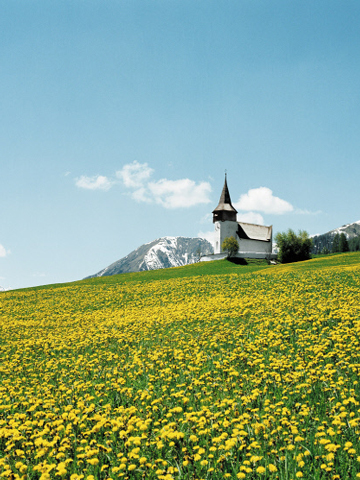 High altitude food production is a novel part of the Davos experience and a 15-minute bus ride from town along steeply climbing mountain roads is the BierVision (www.biervision-monstein.ch) brewery in Monstein. Once the highest altitude brewery in Europe, BierVision might have been knocked off its lofty perch by an Italian interloper, but it nevertheless does an excellent line in organic alcohol and offers beer tasting sessions, during which your pint is served up along with local cheese and ham made from the brewery’s malty leftovers that have been recycled into pig feed. After a brewery tour, which involved getting a look at the beer in its least appetising form – fermentation – we were whisked down to the cellar, lined with glass tankards belonging to locals from Davos and Monstein, and treated to a glass of BierVision's finest. A lovely golden fizz, it was worth the trip to Monstein by itself, although to go just for beer would be to miss out on the lovely chocolate box village. Monstein is without doubt one of the prettiest villages in Switzerland, with its gently crumbling church, timber-framed houses and fabulous views stretching for miles across the alpine landscape.
High altitude food production is a novel part of the Davos experience and a 15-minute bus ride from town along steeply climbing mountain roads is the BierVision (www.biervision-monstein.ch) brewery in Monstein. Once the highest altitude brewery in Europe, BierVision might have been knocked off its lofty perch by an Italian interloper, but it nevertheless does an excellent line in organic alcohol and offers beer tasting sessions, during which your pint is served up along with local cheese and ham made from the brewery’s malty leftovers that have been recycled into pig feed. After a brewery tour, which involved getting a look at the beer in its least appetising form – fermentation – we were whisked down to the cellar, lined with glass tankards belonging to locals from Davos and Monstein, and treated to a glass of BierVision's finest. A lovely golden fizz, it was worth the trip to Monstein by itself, although to go just for beer would be to miss out on the lovely chocolate box village. Monstein is without doubt one of the prettiest villages in Switzerland, with its gently crumbling church, timber-framed houses and fabulous views stretching for miles across the alpine landscape.
Back in Davos, the Friday night summer market gave everyone the chance to get stuck into a bit more of BierVision’s output before heading to the town’s drinking spot du jour – the Ex-Bar. Dedicated eco-bars are not a Davos speciality, and although it did serve up the local brew, the Ex-Bar was no exception (pun intended). What it lacked in greenery however, it more than made up in conviviality although the dodgy blend of local Euro pop and Stilton-level cheese didn’t do it any favours in the aural stakes – I’m sure I heard David Hasselhoff at one point. But the point of Davos isn’t really the nightlife, entertaining though it is, and excellent though many of its restaurants are. Even the chi chi village of Klosters, a 25-minute train ride away, doesn’t have a huge amount going on for night owls. Then again, as a town geared up for sporty types and families rather than the clubbing crowd, it doesn’t really need to be.
 Just outside of Davos is one of its biggest family-oriented draws: the Färich adventure park (www.davos.ch). Banish all thoughts of Alton Towers; this is adrenaline sport with a green twist. Nestled in the shadow of the mountains in the middle of a wood with a crystalline blue river running through it, Färich specialises in a rugged blend of mountain biking and rope climbing. Bikers have trails and an assault course to play with; for everyone else, there’s the network of ropes suspended 60 feet up in the treetops. Along with a smaller (and much lower) course for children, tackling Färich’s five different courses – ranging from easy to extremely difficult – is a brilliant way to spend an afternoon once you’ve exhausted the walking and biking trails surrounding the town. If rope climbing hasn’t sated your appetite for sport, then there’s also the town’s pretty golf course, which offers day passes and tuition. What’s more, it’s also run along eco-friendly lines – including a policy of leaving the undergrowth alone, no matter how many balls land in it – and is only open for six months per year; again minimising its environmental impact. Nearby Klosters also offers a greener take on golf and boasts a nine-hole course certified by the Golf and Environment Initiative.
Just outside of Davos is one of its biggest family-oriented draws: the Färich adventure park (www.davos.ch). Banish all thoughts of Alton Towers; this is adrenaline sport with a green twist. Nestled in the shadow of the mountains in the middle of a wood with a crystalline blue river running through it, Färich specialises in a rugged blend of mountain biking and rope climbing. Bikers have trails and an assault course to play with; for everyone else, there’s the network of ropes suspended 60 feet up in the treetops. Along with a smaller (and much lower) course for children, tackling Färich’s five different courses – ranging from easy to extremely difficult – is a brilliant way to spend an afternoon once you’ve exhausted the walking and biking trails surrounding the town. If rope climbing hasn’t sated your appetite for sport, then there’s also the town’s pretty golf course, which offers day passes and tuition. What’s more, it’s also run along eco-friendly lines – including a policy of leaving the undergrowth alone, no matter how many balls land in it – and is only open for six months per year; again minimising its environmental impact. Nearby Klosters also offers a greener take on golf and boasts a nine-hole course certified by the Golf and Environment Initiative.
Despite the annual banker-fest, Davos is about much more than financial tyros. The spectacular surrounding countryside with its bevy of wildflowers, lush meadows and panoramic views truly is a walker’s wonderland, while also catering for avid wildlife watchers with its marmots, eagles and endangered mountain ibex. The real winners though are families who want a break that includes getting out and about in nature, vast quantities of locally produced fare and activities that have more to them than building sandcastles on a Spanish beach in company with thousands of others. Despite the reputation for froideur, Switzerland is a real family-friendly destination, where children are made genuinely welcome by its citizens. And that, along with the splendid scenery, fresh air and fabulous food, is why Davos shouldn’t be left to the bankers and winter sports fanatics. Forget finance. Davos and near neighbour Klosters belong to families too.
Need to know:
 Eat: Both Davos and neighbouring Klosters have plenty of choice when it comes to food, with locally produced and organic goods forming a large part of the area’s culinary repertoire. In Davos, try the Alpenhof (www.alpenhof-davos.ch) – a 20 minute walk from the town centre – which specialises in hearty Swiss fare and has a children’s menu packed with wholesome fare. The pick of Klosters’ eateries is Restaurant Höhwald (www.hoehwald-klosters.ch), which along with glorious mountain views, does a nice line in hearty food, generous portions and excellent local wine.
Eat: Both Davos and neighbouring Klosters have plenty of choice when it comes to food, with locally produced and organic goods forming a large part of the area’s culinary repertoire. In Davos, try the Alpenhof (www.alpenhof-davos.ch) – a 20 minute walk from the town centre – which specialises in hearty Swiss fare and has a children’s menu packed with wholesome fare. The pick of Klosters’ eateries is Restaurant Höhwald (www.hoehwald-klosters.ch), which along with glorious mountain views, does a nice line in hearty food, generous portions and excellent local wine.
 Sleep: A tiny town, Davos doesn’t have a massive selection of hotels – particularly hotels of the green variety – but does have numerous camping spots in the surrounding countryside. In the winter, the Iglu-Dorf (www.iglu-dorf.com) offers accommodation in carbon-neutral igloos. If you can’t face the thought of a tent or an igloo, try the Morosani Posthotel (www.morosani.ch), which has comfortable rooms (complete with gorgeously squashy beds) in the centre of town. In Klosters, head to Chesa Grischuna (www.chesagrischuna.ch); a beautiful old family-run hotel located in a wooden chalet, which despite its homely atmosphere, has hosted a glitzy roll call of Hollywood and European royalty during its 80-year existence.
Sleep: A tiny town, Davos doesn’t have a massive selection of hotels – particularly hotels of the green variety – but does have numerous camping spots in the surrounding countryside. In the winter, the Iglu-Dorf (www.iglu-dorf.com) offers accommodation in carbon-neutral igloos. If you can’t face the thought of a tent or an igloo, try the Morosani Posthotel (www.morosani.ch), which has comfortable rooms (complete with gorgeously squashy beds) in the centre of town. In Klosters, head to Chesa Grischuna (www.chesagrischuna.ch); a beautiful old family-run hotel located in a wooden chalet, which despite its homely atmosphere, has hosted a glitzy roll call of Hollywood and European royalty during its 80-year existence.
 Getting there: From Paris, taking the train to Davos or Klosters means a journey of around six hours and 30 minutes but does include plenty of wonderful scenery. What's more, Swiss trains are comfortable and run to the second, which makes the journey far more a pleasure than chore. From Paris, take the high speed TGV-Est line to Zurich from the Gare de l'Est. Once in Zurich take the InterCity train to Landquart, where you switch to the Rhätische Bahn for Klosters or Davos. See www.seat61.com for detailed information and fares. There’s also a comprehensive rail pass that covers all forms of public transport within Switzerland (including boats and buses) available from www.travel-swiss.co.uk, which apart from being considerably cheaper than individual tickets, also has a family option where children, if accompanied by at least one adult, travel free.
Getting there: From Paris, taking the train to Davos or Klosters means a journey of around six hours and 30 minutes but does include plenty of wonderful scenery. What's more, Swiss trains are comfortable and run to the second, which makes the journey far more a pleasure than chore. From Paris, take the high speed TGV-Est line to Zurich from the Gare de l'Est. Once in Zurich take the InterCity train to Landquart, where you switch to the Rhätische Bahn for Klosters or Davos. See www.seat61.com for detailed information and fares. There’s also a comprehensive rail pass that covers all forms of public transport within Switzerland (including boats and buses) available from www.travel-swiss.co.uk, which apart from being considerably cheaper than individual tickets, also has a family option where children, if accompanied by at least one adult, travel free.
For more information on Davos go to www.davos.ch or for further information on the entire region, see www.graubunden.com
| READ MORE... | |
 |
GREEN LIVING Ten of the best...European national parks From the volcanic caldera of Mount Teide to the craggy tors of Dartmoor, Europe’s national parks combine stunning scenery with wonderful flora and fauna. Ruth Styles rounds up ten of the best |
 |
GREEN LIVING St Kilda: exploring Scotland’s most westerly point Remote, beautiful and totally uninhabited, St Kilda is a wild paradise just off the Scottish coast. In an extract from his book, Isles on the Edge of the Sea, author Jonny Muir explains why it was love at first sight |
 |
GREEN LIVING Lake swimming, wild berries and traditional smoke saunas: summer at Lake Saimaa With its ultra-clean water and unspoilt countryside, Finland’s Lakeland is a paradise for nature lovers and foodies alike, says Ruth Styles |
 |
GREEN LIVING Top 10...European wildlife destinations From birds to whales, Europe has plenty for wildlife watchers to love. William McLennan rounds up some of the best |
 |
GREEN LIVING Copenhagen: Europe's coolest green city Cutting edge architecture, miles of cycle routes and green spaces galore have made the Danish capital a hotspot for green travellers. Ruth Styles packed her bags for a weekend in Europe’s greenest capital city |




